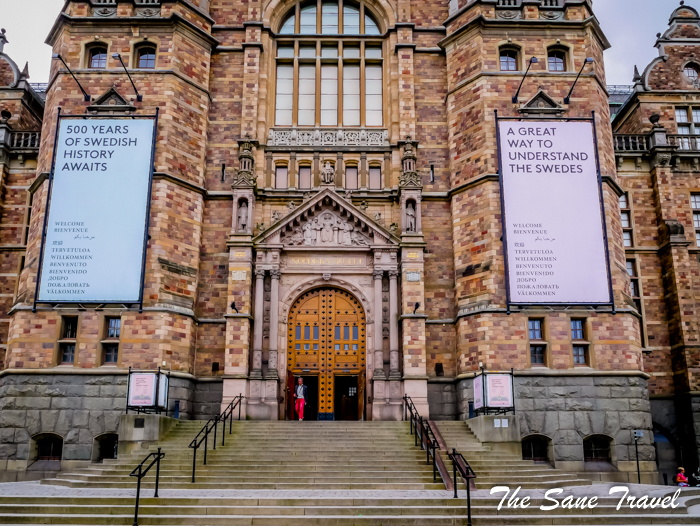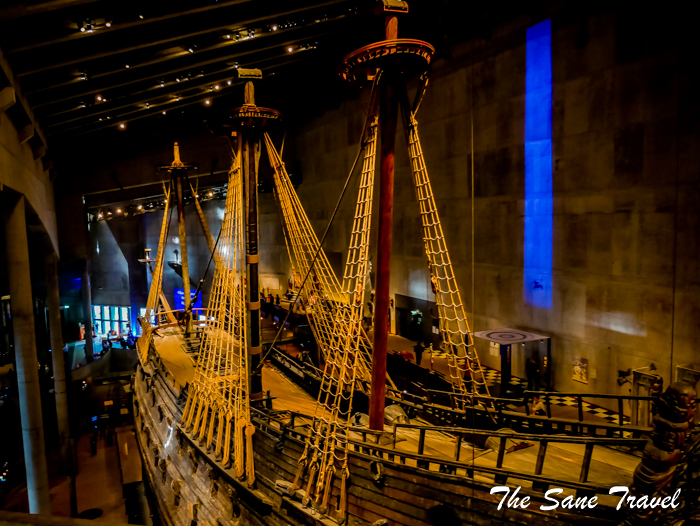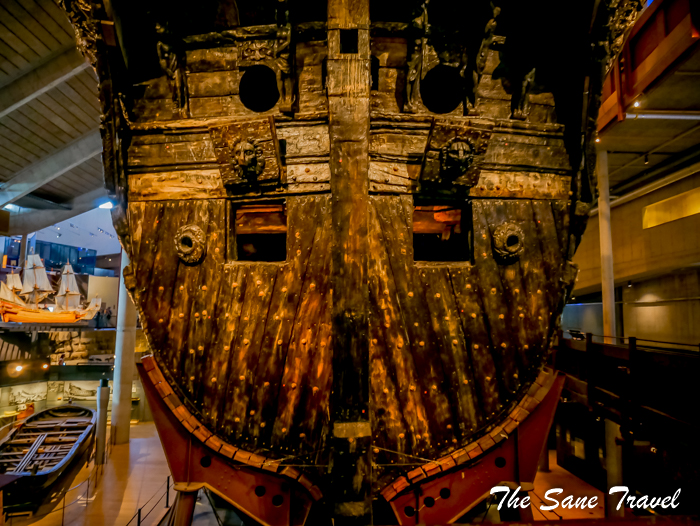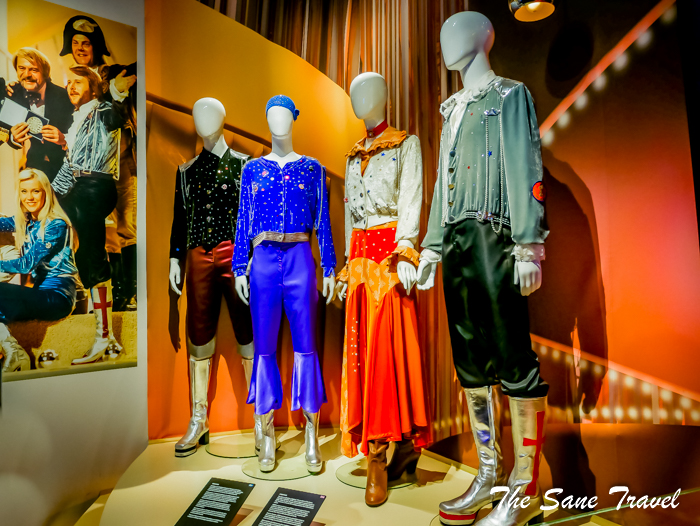What are the first three things coming to mind when you think about Sweden? For me, it’s the legendary ABBA, the annual candlelit Lucia procession on December 13, and the recovered Vasa ship. If your mind goes along the same lines, maybe it’s a good idea to visit three museums in Djurgården, Stockholm, to explore more.
First of all, what is Djurgården?
Djurgården is an island in central Stockholm. In the 16th century, the land became a royal hunting ground, confiscated from the Catholic Church by King Gustav Vasa. Hence its name, literally translated as 'Animal garden'. In the 18th century, the island was opened to the general public and became a popular recreation area. Djurgården is not very large but has plenty of activities on offer. You can visit museums, attractions, cafés, and restaurants. Take a look at Carl XI’s hunting lodge, and wander along with Crown Princess Victoria and Prince Daniel’s path at Kärleksstigen. It’s easy to explore on foot; you can also hire a bicycle or canoe from the Visitor’s Centre. The easiest way to get there is to take a bus number 69 from the Central railway station, get off at Djurgårdsbron and then take a short walk across the bridge to southern Djurgården. Have a close look at the bridge when you cross it! Djurgårdsbron ornate iron bridge was built at the end of the 19th century.
It connects the mainland with the Djurgårdenisland. It was officially inaugurated in May 1897, just before the opening of the international Arts and Crafts exhibition. The bridge is beautifully decorated. Each of the piers is adorned with a relief showing faces of sea monsters and festoons above a shield with a relief of Saint Erik, the patron saint of Stockholm. After a short walk you reach the first of the three museums on our afternoon tour:
The Nordic Museum
It is a museum dedicated to the cultural history and ethnography of Sweden from the 16th century to the current times. The museum was founded in the late 19th century by Artur Hazelius (1833 –1901), a Swedish teacher, scholar, and folklorist, who also founded the open-air museum Skansen located nearby. The present museum building, designed by Isak Gustaf Clason, was completed in 1907 after almost twenty years of construction. It was one of Stockholm's grandest buildings and its silhouette is still visible for miles around.
Originally, it was intended to be a national monument housing the material inheritance of the nation. It was never completed as originally planned, three times the actual size. It takes its style from Dutch-influenced Danish Renaissance architecture. The entrance to the museum is marked by two obelisks and a statue of King Charles X.
Inside the large central hall, visitors are greeted by a monumental oak wood statue of King Gustav Vasa, created in 1925 by Carl Milles.
Museum Collection
The exhibitions of Nordiska Museet, spread over the four floors surrounding the central hall, show a wide range of folk objects that give an insight into Nordic country life over the centuries.
In total there are some 1.5 million objects on display, ranging from clothes, toys and daily utensils to furniture and historic rooms. Some exhibits focus on cultures such as the Samen, while others illustrate typical Nordic traditions and customs.
After exploring the building and the exhibitions of the Nordic Museum, take a short stroll to our next stop:
Vasa Museum
The Vasa Museum was opened in 1990 to display the Vasa, an impressive ship that sank on its first voyage in 1628. The ship was recovered in the early 1960s and is now one of the most popular attractions in Stockholm.
Story of the Vasa
In 1625 King Gustav II Adolf, a member of the Vasa dynasty commissioned the construction of four new warships, of which the Vasa would be the first one. It was the largest ship ever built in Sweden and the Vasa was meant to be the pride of the marine. About three hundred men built the ship in less than three years. On August 10, 1628, a large crowd gathered to see the Vasa depart from Slussen for its maiden voyage. It would never reach its destination. The ship only sailed 1300 meters and sunk, taking 30 out of the 150 passengers with it. Although well constructed, it was not well proportioned; it was too heavy and too tall for its hull. Only in 1956, after years of searching for the shipwreck, amateur archaeologist Anders Franzén recovered a wooden piece of the Vasa. It took 5 years of preparatory work to return the Vasa to the surface. Thanks to the low level of salt in the water the wooden ship was remarkably well preserved. It was clear that such an impressive piece of history deserved its own museum. In 1987 its construction was started, not far from the site where the Vasa sunk in 1628. Three years later, the Vasamuseet (Vasa Museum) was opened to the public.
The Vasa Ship
The Vasa was the largest warship of its time; it had 10 sails, carried 64 cannons, had a crew of 145, and could carry 300 soldiers. The ship had a length of about 69 meters (226 ft) and its main mast was more than 52 meters tall. But what makes the ship really impressive is the rich decoration: a total of 500 sculptures and 200 ornaments were created by sculptors, most coming from Holland and Germany. The most impressive decorations are the large lion at the ship's bow and the 19.3 meters (63 ft) high stern completely covered with magnificent sculptures. The lion is a reference to King Gustav II, known as the 'Lion of the North'.
Visitors are not allowed onto the ship itself, but a section of the upper cannon deck has been reconstructed. Many other exhibits in the museum focus on different aspects of the history of the Vasa, including its construction, the disaster, and the salvage of the shipwreck. If you are lucky like me, maybe you can even meet King Gustav II Adolf and his wife there.


The ABBA Museum
It is not a conventional museum. While you can see exhibits with the band's original outfits, instruments and other memorabilia, the museum is interactive, inviting you to sing and dance as the fifth member of Sweden's most famous band. It is also home to the Swedish Music Hall of Fame and the Pop House Hotel. The museum was opened in 2013. ABBA, who rose to fame in 1974 with their song 'Waterloo' at the Eurovision song contest, is one of the world's most successful bands ever, with more than 379 million records sold. I guess you know their timeless songs such as Dancing Queen; Money, Money, Money; Mamma Mia; Fernando; Knowing Me, Knowing You and The Winner Takes it All.
Exhibits
The first exhibits tell the story of the ABBA members in their early careers. Next, you can see the music instruments and the original mixing console of Polar Music Studios where ABBA recorded most of its songs. Many other rooms are featured, such as the make-up area, the tailor room, and a small office. Further on the museum becomes more interactive. You get the chance to become ABBA's fifth member and perform on stage with the band members’ holograms. The performance is recorded and you can download it later from the museum’s official website. You can also sit in the actual helicopter featured on the cover of 'Arrival', or dance with ABBA avatars on the dance floor. Dozens of golden records are also displayed, and you can see the band's stage costumes too.

Practical information
Transport to Djurgården
Buses 67, 69, and 76. Underground: to Karlaplan.
Ferry: to AllmännaGränd from Slussen.
Tram: Djurgården Line
Opening hours:
Nordic Museum
Monday–Sunday:
10.00–17.00 (June–September: 09.00–18.00)
Vasa museum
1 June - 31 August:
Daily 8.30-18
1 September - 31 May:
Daily 10-17
The ABBA Museum
Opening hours vary
MAY 15th - AUGUST 28th 2016
Monday – Sunday 10 am - 8 pm. Last slot time 6:30 pm
Check their website.
If you want to see more of Sweden, taking a train trip might be of interest to you. Learn more by reading A Mary Road article about exploring Sweden by train.
- Published by Anita on August 6, 2016
- Traveled July 2016
Author: Anita Sāne

About the author
Anita is a part-time traveller, passionate photographer and a retired career woman from Latvia, travelling mostly solo for more than 15 years. She is a skilled travel planner who plans and executes her travels by herself. Anita wants to show you how to travel the world and open your mind to new experiences. Follow her on Facebook, Instagram, Pinterest, Twitter and Bloglovin.




















Report
My comments